



No tours available yet...
No tours available yet...
No tours available yet...
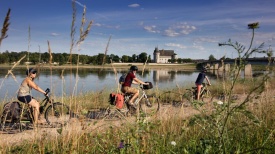 France Bike Tours
France Bike Tours 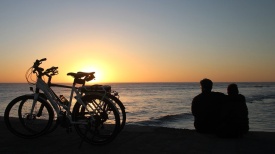 Europe Bike Tours
Europe Bike Tours 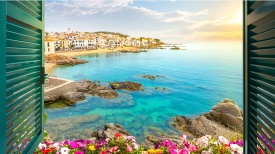 Europe Luxury Bike Tours
Europe Luxury Bike Tours 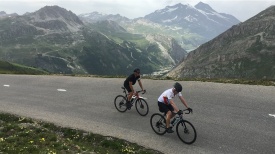 Epic Cycling
Epic Cycling 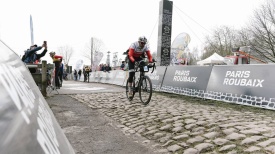 Cycling Challenges
Cycling Challenges 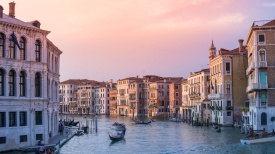 Italy
Italy  Spain
Spain 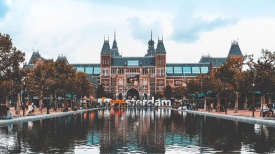 Holland
Holland 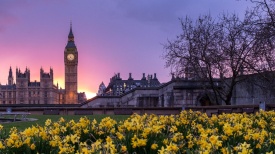 United Kingdom
United Kingdom 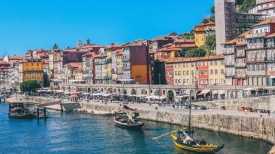 Portugal
Portugal 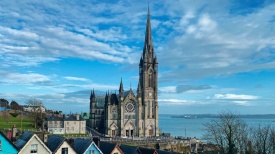 Ireland
Ireland 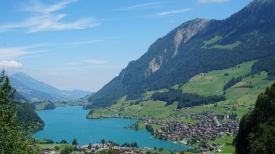 Switzerland
Switzerland 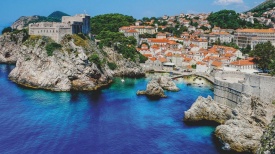 Croatia
Croatia 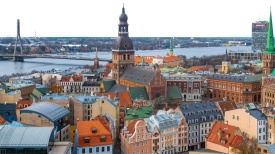 Baltic States
Baltic States 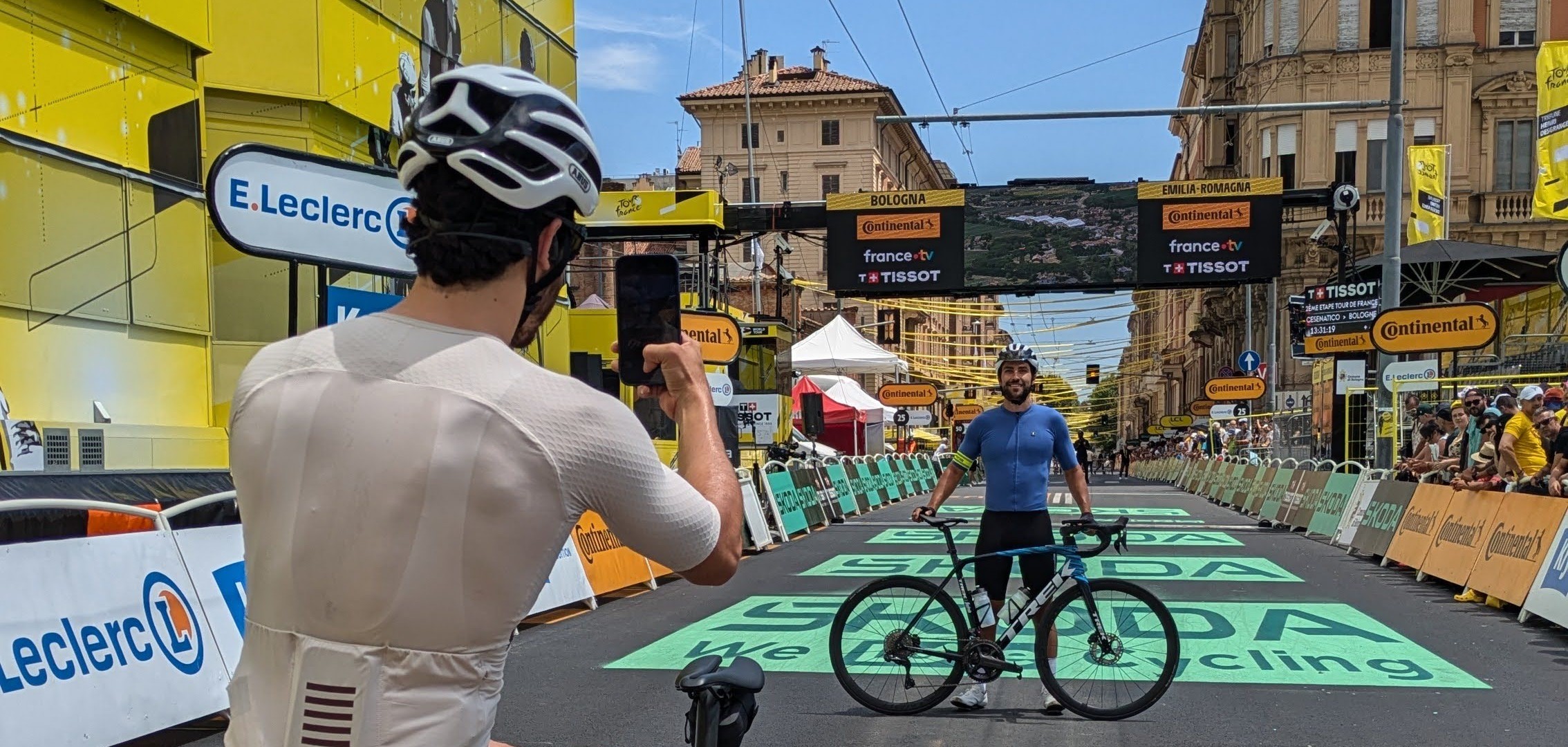





Tour de France
2025 Tickets

Tour de France
2025 Packages

Adventure Vacations
for Couples
European Tours
for Seniors
European Tours
for Families
Group Tours to
Europe
Honeymoon
Europe Tour
Singles Tours
Europe
Italy
Spain
Holland
United Kingdom
Portugal
Ireland
Switzerland
Croatia
Baltic States
France Bike Tours
Europe Bike Tours
Europe Luxury Bike Tours
Epic Cycling
Cycling Challenges
Self-Guided Tours
Wine Tours

Heritage Tours

Adventure Cycling
Food and Culinary Tours
Walking and Hiking Tours
Multi Sport Tours

Private Guided Tours

Custom Tours
Men's Tour de France tickets 2025
Women's Tour de France tickets 2025
L'Etape du Tour de France
Italy
Spain
Holland
United Kingdom
Portugal
Ireland
Switzerland
Croatia
Provence
Loire Valley
Bordeaux
Brittany
Burgundy
Dordogne
Alsace
Massif Central
Italy
Spain
Portugal
Provence
Loire Valley
Bordeaux
Dordogne
Burgundy
Brittany
Alsace
Burgundy
Alsace
Bordeaux
Bordeaux
Burgundy
Alsace
Provence
Loire Valley
Languedoc
Portugal
Provence
Alsace
Dordogne
Loire Valley
Brittany
Burgundy
Normandy
Corsica
Provence
Normandy
Dordogne
Loire Valley
Burgundy
Alsace
Brittany
Corsica
Loire Valley
Provence
Bordeaux
Languedoc
Dordogne
Burgundy
Brittany
Guadeloupe
Loire Valley
Dordogne
Brittany
Provence
French Riviera
Spain
Normandy
Corsica
Atlantic Coast
Loire Valley
Dordogne
Brittany
Provence
French Riviera
Spain
Normandy
Corsica
Atlantic Coast
Provence
Loire Valley
Languedoc
Dordogne
Provence
Loire Valley
Languedoc
Dordogne
Home » European tours » Languedoc
Are you looking for a France bike tour in the south of the country? Located in the most southern part of France, the province of Languedoc is an area with scenic landscapes and a beautiful climate. Bordering the Mediterranean Sea to the east and the Pyrenees Mountains to the south, the region provides visitors a lovely variety of landscapes to cycle through. The South of France with its warm, inviting climate and ancient heritage, offers visitors a combination of relaxation, adventure, and a step back in history. Whether it is riding along the Canal du Midi on the Garonne River, visiting one of the many Cathar castles, the medieval city fortress of Carcassonne, or just relaxing by the Mediterranean Sea while drinking some local Corbieres wine, there truly is something for everyone in Languedoc and southern France.
Filter by :


Tour of Languedoc Region










You will start your tour in St Guilhem le Desert (UNESCO site #1), a beautiful French village with one of the most amazing cloister in the world. The...


Languedoc Wine and Heritage Tour
Discover sunny Languedoc on a fabulous route that takes you way off the beaten tourist path. On this tour we take you immediately into the countryside...


Languedoc Bike & Canoe Tour
Discover sunny the Languedoc Department on another fabulous route that takes you off the beaten path - once again ! This is our playground - our office...


Canal du Midi, from Moissac to Carcassonne
This trip brings you along the most beautiful sites along the Canal that links the Mediterranean and the Atlantic Ocean on safe cycle paths. Take your...


ViaRhôna (EuroVelo 17) from Montelimar to Avignon










Come and discover the part of ViaRhôna between Montélimar and Avignon, a city of art and culture, by following an itinerary along the Rhône. After...


Languedoc Wine Tour










Starting from the famous "pink city" Toulouse, your trip will take you along the UNESCO World Heritage site of Canal du Midi that links the...


Canal du Midi, from Carcassonne to Sète










Cycling in Languedoc from Carcassonne takes you on a relatively easy cycling trip along the famous Canal du Midi to finish on the Mediterranean coast in...


Languedoc, Cathar Country
This trip will begin in the wonderful medieval city of Carcassone. It is a UNESCO World Heritage Site near the Mediterranean Sea. The tour ends in the...


ViaRhona from Vienne to Montelimar
Come and discover part of the ViaRhôna between Vienne and Montélimar, a city of art and history, on an itinerary along the Rhône. After discovering its...
With a warm, inviting climate, scenic landscapes and a multitude of ancient heritage sites, Languedoc is a unique destination for a cycling vacation. You can choose a relaxing itinerary along the Canal du Midi, following the water and enjoying a picnic under the plane trees.
For the heritage lovers, Carcassonne and its fortified city (UNESCO World Heritage Site), is the place to be, together with the Cathar castles and fortresses.
Languedoc also boasts an amazing coastline, all the way from Sète to Collioure, a small Catalan port where the Mediterranean waters meet the Pyrenees Mountains.
Languedoc is also home to a delicious Mediterranean and Catalan cuisine, with outstanding recipes such as aubergines à la tomate, courgettes farcies, and also “tielles”, a delicious small pie filled with cuttlefish. Local wines are also a delicacy, with more than 120,000 acres of vineyards throughout the region. Languedoc definitely has something for everyone!
5 REASONS TO DISCOVER LANGUEDOC
The oldest working canal in the world, this amazing work of engineering is considered by UNESCO to be a World Heritage site, and for good reason. During 15 years, from 1666 to 1681, 12,000 workers shoveled this long trench to become a navigated waterway. However, it wasn’t long before Louis XVI ran out of money to finance this great project. Its designer, Pierre-Paul Riquet, then gave of his personal fortune to continue. Unfortunately he passed away before he could see his life’s masterpiece achieved. Opened in 1681, the 204 kilometers of the canal links Toulouse to the Mediterranean Sea. Once used for commerce, the canal is now primarily a tourist attraction where visitors can travel along by boat, or by hiking or cycling alongside it. There are also plenty of places along the way to stop and enjoy a leisurely lunch or savor a glass of wine. Connecting the Mediterranean to the Atlantic Ocean, this magnificent feat has been referred to by the UNESCO as “a masterpiece of human creative genius”. It is a must-see attraction for anyone planning a trip to Languedoc.
This fortified city is located on the trade road linking the Mediterranean to the Atlantic and has always been a strategic place. Nowadays it is famous for its medieval fortress – the Cité de Carcassonne – one of UNESCO World Heritage Sites. It was renovated by Viollet-le-Duc in the 18th century and is therefore in remarkable condition. Make sure you see the Narbonne Gate, which defended the entrance to the fortified town and the magnificent basilica of Saint Nazarius and Saint Celsus (St Nazaire and St Celse in French).
The Cathars were Gnostic Christians and founders of a new religion in the twelfth century called Catharism. They were considered by the Pope to be heretics and were subsequently the targets of a full-scale crusade. The Cathars sought refuge in the South of France in castles and fortresses, many of which were located high atop the hills of Languedoc. They lost their battle and most were put to death for their beliefs, but many of the castles that once protected them still stand today. The castles that are accessible to the public require some hiking to reach, but their magnificent presence is a sight to behold and a visit to one of these giant monuments is a virtual step back in time.
The town of Perpignan is the economic and cultural capital of Roussillon, and a Catalan city. Even though Perpignan is located in the South of France, you will notice the strong influence of Barcelona, capital of the “new” Catalonia. With the architectural refinement of its cathedral, its royal palace, its convents and monasteries, its ramparts and fortifications similar to the Gothic quarter of Barcelona, Perpignan is one of the capitals of Gothic art in the Mediterranean.
Collioure is a lovely resort by the Mediterranean Sea. Many artists such as Matisse have painted the picturesque landscape of this Catalan port. The town was given back to France in 1659, after being annexed to the kingdoms of Aragon and Majorca. Collioure is also a fishing village, famous for its anchovies. Make sure to get some of these salty delicacies at the Societe Roque!
2,500 years ago, the olive trees were brought to southern France by the Greeks. The olive trees of Languedoc grow dry little black olives or juicy big green ones. Olives and olive oil are on all outdoor markets. This region consume 50,000 tons of olive oil per year! Make sure you bring some home.
The gastronomy from the South of France consists of dishes with eggplants or zucchini: Aubergines a la tomate (eggplants with tomatoes), Aubergines aux cepes ( eggplants cooked with mushrooms), Courgettes farci (Stuffed Zucchini) are to name a few. We also find influences from the Catalan culture with Cod, turkey, or chick peas “à la Catalane” – Catalonian Style.
Languedoc also has some great wines with world-famous names such as Minervois or Corbieres. The AOC wines of Languedoc covers 120,000 acres of vineyards on the slopes and “garrigues” of the South of France. AOC is a guarantee of the quality of wine and it is the highest French wine qualification.
The region produces red wine, pink or rosé, and white wines. The diversity of soils makes it possible to produce wines of different types, and the differences are carefully maintained, with a constant eye on quality. Among many, we can name:
The Languedoc region in the South of France is located between the Atlantic Ocean and the Mediterranean Sea and therefore has always been an extremely important trade route.
It is composed of 5 departments: Lozere, Gard, Herault, Aude, and Pyrenees Orientales and its landscape is varied with farmlands and countryside on one hand, and important cities such as Montpellier, Perpignan, Beziers and Carcassonne on the other; and with vineyards as well as beaches on the coastlines of Languedoc.
Tourism will very soon overtake agriculture as the most important economic activity. The wealth of the natural heritage and history, and the mix between ocean and mountains give Languedoc plenty of options in terms of touristic activities; from water sports to spotting wildlife. Cyclists will also enjoy riding alongside the beautiful water, coastal stretches and quaint fishing villages.
The weather in Languedoc is mild to warm. Temperatures can range from 50 to 70 degrees Fahrenheit in the spring, 65 to 80 degrees during the summer months, and 55 to 75 degrees in the autumn season. Perfect for a cycling holiday!
The archeological and historical heritage is very important in Languedoc, relating from one of the oldest European Man (the Man of Tautavel, 450,000 years old) to Roman and Baroque churches and fortresses.
The population of the Mediterranean Sea arrived on the coast of Languedoc in the VI century BC. They introduced vineyards and olive production. The Phoenicians founded Collioure and Agde. Originally from Minor Asia, the Greeks of Phocee founded Massilia (Marseille). The Masseliotes (inhabitants of Marseille) took control of Agde and it became an important commercial trade center between the Mediterranean and Northern Europe.
Around 120 BC the Romans conquered this southern region, Narbonne in 118 BC, then Beziers. In 27 BC, the Narbonnaise was created, a province that would correspond to today’s Languedoc.
The Roman history of Languedoc-Roussillon is long and has left some spectacular traces. The names of towns, the Catalan language, the region’s heady wines and olive-oil dishes all testify to the lasting influence of 400 years of occupation.
This is also a region where the “Cathars”, named after the Greek “katharos” or “pure”, fought the Catholic church in the 13th century. It took many decades to exterminate this movement whose followers believed the visible world to be the work of the devil. Nowadays, many impressive fortresses perched on dizzying heights and the ancient villages still bear witness to this lost religion.
The term « Languedoc » appeared in the XIII century to designate all the landmarks where it was said « oc » for « oui » (yes) by opposition of the Northern provinces where the dialect « oil » was spoken. The Occitan language was composed of several dialects: the gascon, the limousin, the auvergnat, the provencal, and the languedocien. In 1919, the Escola occitana school was created and in 1945 the Institut of Occitana studies to keep the language alive. It is indeed a national treasure as it holds 160,000 words versus 30,000 in French!
You can also find your Normandy bike tour, your Spain bike tour, Paris bike tour or your Pays Basque bike tour.
EXCELLENTVerified Croatia Bike Tour = Amazing This is the second time we have used Discover France for a vacation in Europe, both trips were 10/10. This time was a little more special as this was part of our honeymoon! We booked the shorter Croatia trip through the Istrian peninsula and it did not disappoint.Our tour consultant, Solene, was amazing! She took care of everything and answered any questions we had throughout the process. She also made sure all the hotels knew that it was our honeymoon so we had a couple extra surprises waiting for us when we checked in at each hotel.We also needed several transfers to and from the airport which Solene was happy to help with. It made the trip so much less stressful when you are able to book everything through the same service.The bike tour itself was so much fun. The recommendations (sites to see, restaurants, cafes, etc) provided by Discover France were spot on. The locals were so friendly (and most spoke English which helped!). The food was delicious especially being in a wine and truffle region. We would 100% do this trip again!Thank you Solene and Discover France!Verified 5th time (and lifelong) return customer Hands down the best adventure organization I’ve ever worked with abroad. This will be my 5th time returning to the TdF in 2025 with Discover France. Gabriel and the reservation team do everything they can to make your trip exactly as you hope. If there’s something they can or cannot do they work with you all the way. It’s a very one-on-one, professional and reassuring process for reservations abroad. The programs are incredibly memorable, with exclusive VIP access that exceeds any other TdF organizations. Their focus is the riding, course, and to make sure your experience on a bike is as good as it can possibly be. Other programs offer different bells and whistles to their TdF packages but absolutely nothing is as exclusive, personalized, and uniquely small-group as Discover France programs. You do not need to be an expert rider for the programs. But experience and at least comfort on a bike is needed. The rides can also be tailored on a daily (or even hourly) basis to the rider/group skill, weather, overall energy level that day, and your personal preferences. Support vehicle with special French credentials allows for Discover France to provide a van with you the entire trip. Sun, clouds, rain, sleet/snow (yes…it’s the Pyrenees or Alps), hot and cold: there is always a vehicle that can help you along the way and offer a place to bring along your gear like the professionals. Shout out to: Florentin and Titouan for spectacular rides and support expertise. Finally, Thomas and Aurelian are two of the most dedicated cycling enthusiasts and leaders of a one-of-kind organization. Their dedication and leadership is evident from the top down as all of the guides and employees seem to love their works as much as they do.Verified Puglia in October This is the second year in a row that our group of friends have chosen Discover France. This time to Puglia. And again, the experience was fantastic. It starts with our tour consultant, Gabriel, who is responsive and truly cares that we have a great holiday. This year, we requested a one-day diversion off the usual route and the Discover France team mapped a great route for us. We also appreciate how the bikes are in good shape and all is well organized for our arrival. The route was generally on bike paths or tertiary roads and relatively flat - a well designed route for sure.Verified Costa Brava Spain This is our 4th bike trip with Discover France, and they never seize to amaze us. We have been working with Solene, and she is remarkably professional, responsive, and most importantly, she listens to our "wish list" of preferences, and makes suggestions with that in mind. All our trips have been in France, with this one in Costa Brava. We loved biking in this region of Spain. Most of the biking was on gravel trails, and kept us off the roads. The scenery was beautiful, particularly the small coastal towns. The itinerary was well planned and we enjoyed the 2 night stays in each village, in lieu of moving nightly. I would recommend this route. I will be reaching back out to Solene to book our next trip. She is wonderful and I wouldn't consider using another bike tour company. Safe biking..... AlishaVerified Loire Valley success. My girlfriend and I had an amazing experience doing the Loire Valley ride from Amboise to Chenhuette. Gabriel and team Discover France were very always responsive and available to help us. The routes were well thought out. Once you master the App, they are very easy to follow. The hotels were amazing and the staff at each one had a good relationship with DF. The bikes were amazing - Moustache Dimanche 28.4. They made this trip the success that it was.Verified Puglia Bike Just finished a bike trip to Puglia. Gabriel did an awesome job! Great hotels, bikes, routes and destination advice. We would highly recommend having Gabriel at Discover France plan your routes. My brother and sister have also used Gabriel and were extremely happy as wellVerified Cotswolds This was the 4th trip using Discover France and each time has been amazing. This trip was to the Cotswolds in the UK. The organization of the trip (specifically Gabriel service) was outstanding. The hotels were all great and scenery was beautiful. We had one day of heavy rain but that added to the allure and challenge of the rides. Thanks to all at Discover France and of course Gabriel.Verified Loire Valley Classic - Great trip! Our first trip with Discover France but I hope not our last. Tatiana put together a great itinerary for our self-guided trip. The hotels were lovely, clean and biker-friendly, with most in former chateaux themselves. The bikes (2 regular, 1 e-bike) were in great condition and well-equipped, and the orientation session was very thorough. Luggage service worked as promised. Discover France did a good job minimizing our time on busy roads - almost all the trip was on bike paths or roads with little vehicular traffic. No complaints from us!Verified Bordeaux-Dordogne: The best trip yet! Our third trip with Discover France, from Bordeaux to Sarlat in the Dordogne, was the best one yet. Loved the countryside, the food, the hotels, everything. For the first time I rode a pedal-assist bike, and it was a game-changer for me now that I'm in my sixties -- no more worrying at night about climbs I might be facing the following day.! My husband stuck to the standard touring bike and it worked out well for both of us. Working with Gabriel was a breeze. Thanks, Discover France -- we'll be back!Verified Loire Valley Classic: An Incredible Tour One of the most visually compelling bike tours we’ve done in Europe. All the major chateaux in the Loire Valley are located along the route, which is largely comprised of bike trails and/or little-trafficked country lanes. The local food and wines are exceptional. Discover France is a first-class operation; we’ve worked with them before, and will again on our next visit to France. Their entire team is great; extra kudos to our tour consultant, Solene Graino.
US HQ
55 East 59th Street, 9th floor
New York, NY 10022, United States
(1) 800-929-0152
FRANCE HQ
427 Rue Hélène Boucher, Espace Commercial Fréjorgues Ouest, Mauguio 34130, France
+33 (0)4 67 15 82 04
© 2025 Discover France. All rights reserved
Legal notice
Ready for more travel inspiration? Stay connected by:
We will get back to you soon.
Ready for more travel inspiration? Stay connected by:
